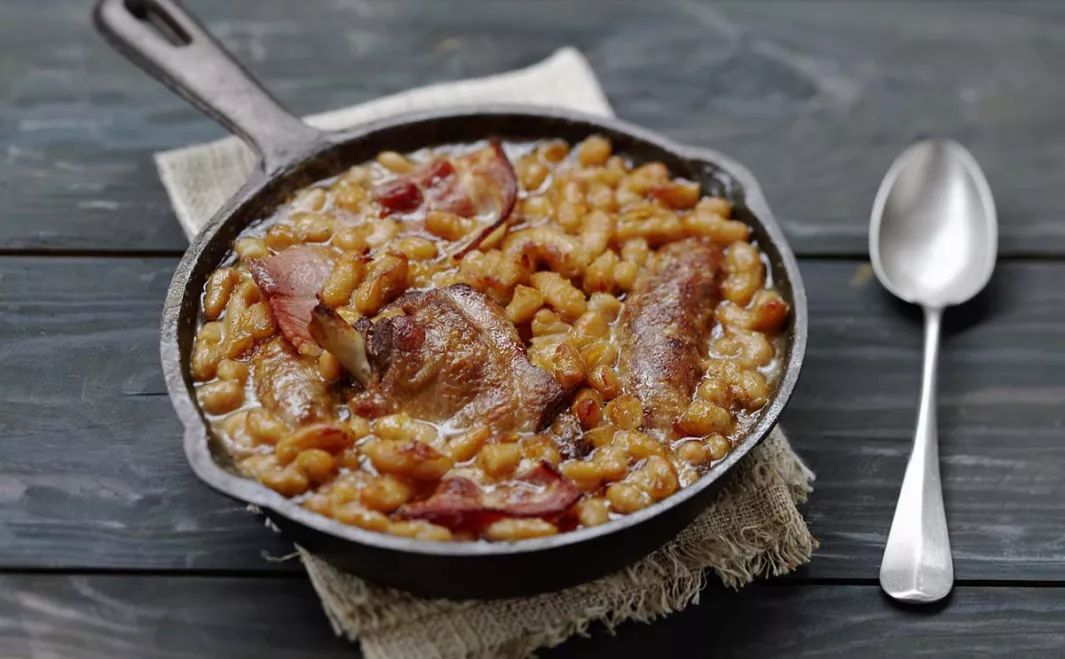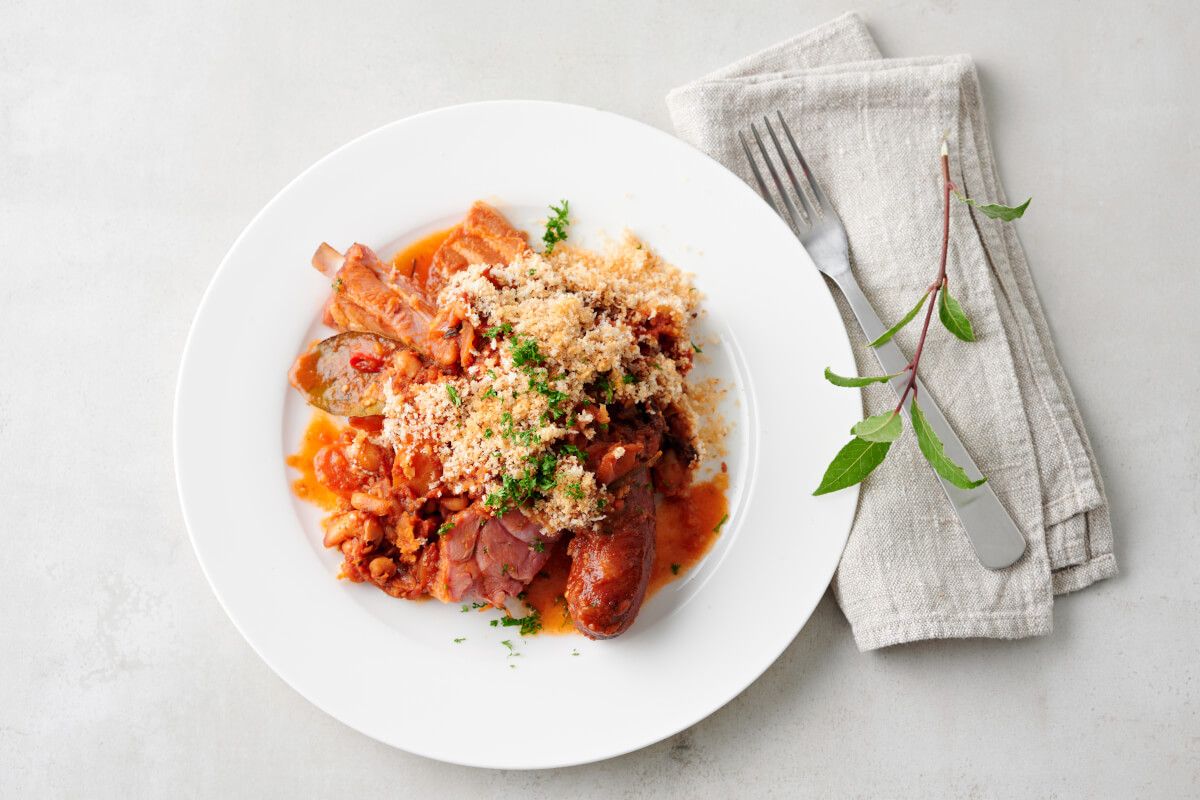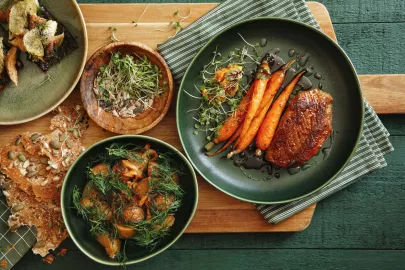10 Tips for Making French-Inspired Cassoulet According to Six Pros
Who says you can’t have your cassoulet and eat it too? Although jetting off to the South of France may be on hold for the moment, whipping up this traditional French dish at home is actually not as complicated as it seems. We enlisted the help of six chefs from around the country to let us in on their tips and tricks for preparing this delicious, hearty stew at home.
Best of all, one of our trusty chefs provided us with a unique recipe to create your own twist on cassoulet at home. Get your pots ready!

In this article
Cook Items Individually
“The best tip I have is to cook items individually to increase flavor,” says Chef Kathleen O’Brien Price, curator of Let's CookIN. “We have this misconception that you can throw everything into a pot and it will be amazing, but great things happen when you combine technique with flavor.” O’Brien Price notes that overcrowding a pan with too many ingredients will create steam, which will not result in color or flavor. Additionally, she emphasizes that temperature controlling the pot to ensure that nothing is boiling is key, as this will cause proteins to become tough.
Sear Your Meats
Belgian Chef Dieter Samijn, of Café Boulud (Daniel Boulud) in Palm Beach explains that searing red meats before braising them is absolutely necessary to create tasty cassoulet at home. [Samijn recommends using an Instant Pot over a Crockpot, as they are “faster and more versatile.”] For Samijn, bacon or pork belly are non-negotiables in the stew, as are good quality beans. O’Brien Price agrees, that while searing takes a bit more time, the complexity of flavors achieved from doing so is worth it.
Don’t Fear the Fat
New York-based Chef Derrick Paez recalls that one of the first things he learned in culinary school was to never trim off too much fat when making cassoulet. “[In trimming off too much fat], the cassoulet will become dry and bland” he says. Paez notes that the choice of proteins ranges from duck to pork and / or lamb, though he prefers a good balanced mix of the three.
Use What You Have
“Cassoulet is a peasant's dish that uses various leftovers in combination for a hearty French stew,” explains Chef Mark McLean of Remarkable Cuisine. “You might not have duck confit laying around, however, using chicken or Cornish hen can be an easy substitute.” McLean describes that the point of the dish is to combine elements together to build a unique and hearty flavor.
“As I say for most recipes: open your cabinets and then your mind, then, create,” he says, citing that ultimately, the “marriage” of elements is what brings greatness to a final dish. Note: McLean notes that roots, hers, and stock are non-negotiables in stewmaking, though from this foundation, many additions and swap-ins work.
Broth Is Key
Lucy Vanel of Lyon-based Plum Lyon, as well as founder of Lucy's Kitchen Notebook, notes that although some people don’t find it necessary, adding broth is a key component to making delicious cassoulet at home. “A base broth made with meats (I use whole pork cheeks and duck necks) and most of all the cartilaginous bones, chicken carcasses, and pork rind, to prepare a thick umami-rich broth is what elevates a simple baked bean dish to cassoulet,” she says. Valen suggests layering the meat, hocks, and bones with herbs and veggies in an Instant Pot, covering them with a few quarts of water, and pressure cooking on high for 30 minutes to create a delicious, easy-to-make broth at home.
Frozen / Pre-Chopped Veggies Work Just Fine
O’Brien Price finds that people are often scared away from making cassoulet based on the sheer list of ingredients required. “I like to think of cassoulet or any stew making in four steps: chop, sear, sauté, and cook,” she says, citing that purchasing frozen or pre-chopped/washed veggies eliminates the first step and makes the process even shorter. [Note: O’Brien Price notes that while being pre-chopped veggies is totally fine, stick to fresh garlic and onions as opposed to pre-cut, as the flavor is completely different when purchased fresh.]
Know Your Ratio
Valen’s general Instant Pot tips for stews is to use a 3:1 ratio. “The ratio I have in my mind is 3:1 for time,” she explains. “If a recipe calls for simmering a stew for 1.5 hours, I divide that by 3, and cook it in the Instant Pot for 30 minutes.” Valen highlights that remembering that certain ingredients have a tendency to overcook is important, and that stews need much less liquid when cooking in an Instant Pot.
Try a Twist
Harryele Eugène, founder and Executive Chef of Arijo Catering in Atlanta, suggests giving a twist on traditional French cassoulet a go. “Many people have altered the recipe by finding shortcuts and making substitutions for traditional French cassoulet,” she says. Her Haitian twist adopts classic ingredients and methods, though uses a few alternative herbs and natural ingredients.* “If in a rush, canned beans can be used to speed up the process, usually cutting the cooking time in half,” she says, noting that rinsing and draining them is essential.
*For Eugène’s Haitian Cassoulet recipe, scroll to the bottom of this article.
Texture Matters
“The most often overlooked step is the way one approaches cooking the beans,” says Paez, who emphasizes a 24-hour soak and rinse prior to cooking, which can be done in a simple court-bouillon (made with vermouth and boutique garni). Paez also recommends cooking the beans ⅔ of the way before combining the ingredients. “A good rule of thumb is to preserve the integrity of the bean and retain enough liquid so that the beans are submerged, so you have extra liquid to work with when putting together the cassoulet,” he says.
Paez also notes that allowing a layer of crust to form on the top, or adding breadcrumbs to the dish, creates even more texture in the final cassoulet, however, letting the beans cool before adding them to the mix is the most imperative step to achieving optimal texture. “This is the way you get that thick viscous and delicious effect when the cassoulet comes out to showcase all the glory in this dish. The rest is, as they say, gravy!”
Have Patience!
“Take your time. If you want to make a good cassoulet, it takes time and effort,” says Samijn. Paez expects 2.5 to 3.5 hours of time to complete the meal from start to finish, including the preparation of the ingredients, though when enjoying with family and friends– and a glass of red wine, of course– it promises a wonderful night. “[I recommend sipping] something burly and rich, just like the cassoulet. Now enjoy!”
“With a few simple steps and a bit of time, soups and stews are one of my favorite things to eat and meal prep,” concludes O’Brien Price. “They only get better with time, they can be frozen for the future, the flavor options are endless, and are easy to execute with the knowledge of some basic techniques.”
Contributor

Editor

















